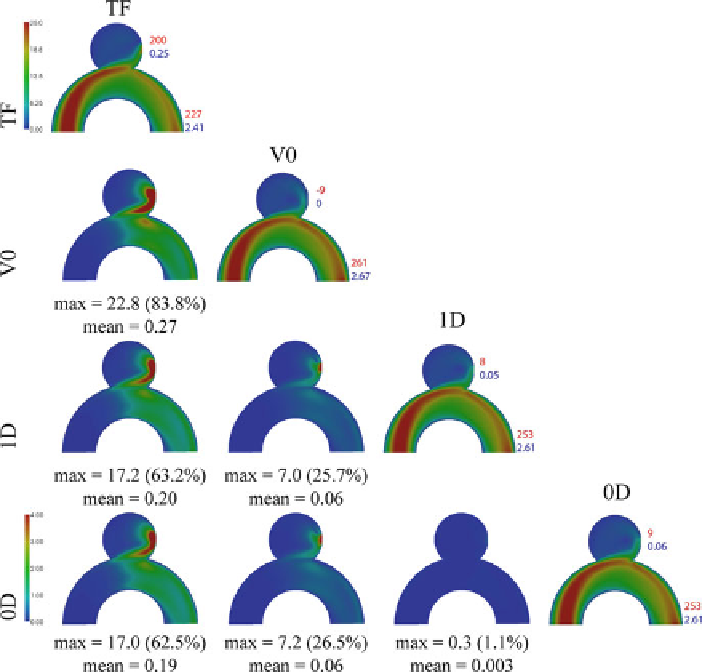Biomedical Engineering Reference
In-Depth Information
Fig. 10
Velocity magnitude (cm/s) for steady-state simulations of the clipped geometry using
different boundary conditions and its differences. The maximum difference is calculated for the
cross-section, using the maximum value for the percentage. The values in the figure are the pressure
gradient (up) and flow rate (down)
5.2
Anatomically Realistic Geometry
The anatomically realistic patient-specific geometry of a cerebral aneurysm (Figs.
1
and
2
) was used to study the impact of changing the fluid rheological model.
The simulations in this case were performed under a steady inflow regime.
As expected also from the results in the idealized geometry, variations in the fluid
model influence the computational solution. In Fig.
14
the results for the velocity
magnitude, the WSS and WSSG (spatial WSS gradient) for both Newtonian and
Carreau solutions are shown, as well as their differences. The discrepancies between
the two models reach 11 % in the velocity magnitude inside the aneurysm. The
WSS and WSSG differences are even more significant, 19 % and 25 %, respectively,
located at the neck of the aneurysm. These results indicate that the use of a constant

Search WWH ::

Custom Search